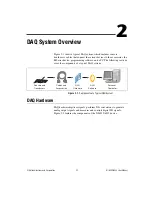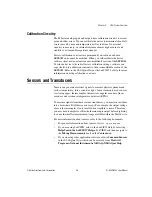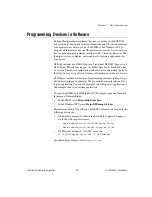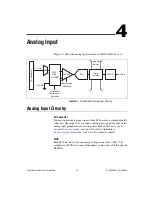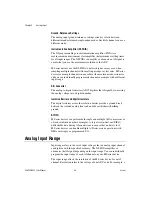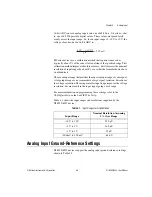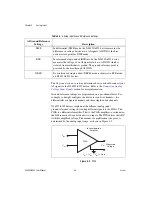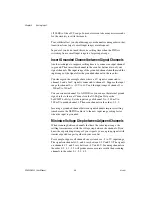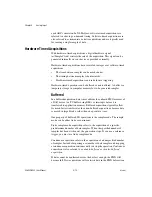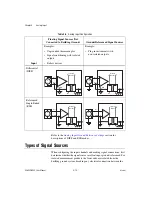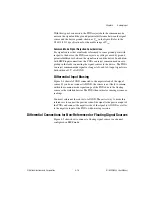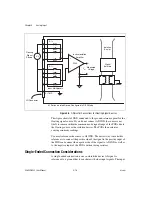
Chapter 4
Analog Input
4-4
ni.com
The
AI ground-reference setting
determines how you should connect your
AI signals to the NI 6232/6233 device. Refer to the
section for more information.
Ground-reference settings are programmed on a per-channel basis. For
example, you might configure the device to scan five channels—two
differentially-configured channels and three single-ended channels.
NI 6232/6233 devices implement the different analog input
ground-reference settings by routing different signals to the PGIA. The
PGIA is a differential amplifier. That is, the PGIA amplifies (or attenuates)
the difference in voltage between its two inputs. The PGIA drives the ADC
with this amplified voltage. The amount of amplification (the gain), is
determined by the analog input range, as shown in Figure 4-2.
Figure 4-2.
PGIA
Table 4-2.
Analog Input Ground-Reference Settings
AI Ground-Reference
Settings
Description
DIFF
In differential (DIFF) mode, the NI 6232/6233 device measures the
difference in voltage between two AI signals. AI GND is the bias
current return point for DIFF mode.
RSE
In referenced single-ended (RSE) mode, the NI 6232/6233 device
measures the voltage of an AI signal relative to AI GND, which is
isolated from earth/chassis ground. The ground reference point is
provided by the user through AI GND.
NRSE
Non-referenced single-ended (NRSE) mode is identical to RSE mode
on NI 6232/6233 devices.
V
in+
V
m
= [V
in+
– V
in–
]
×
Gain
V
m
V
in–
PGIA
+
–
Measured
Voltage
Instrumentation
Amplifier




